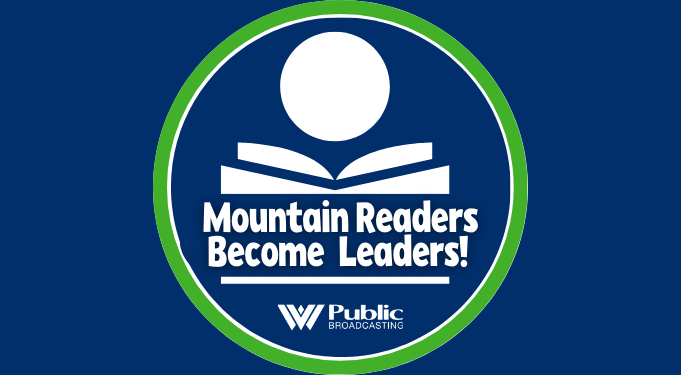The Free Application for Federal Student Aid, commonly known as the FAFSA, is meant to help students access funds to pursue higher education. But recent changes to the federal form have left students and schools scrambling for answers.
The last year of high school is a busy time for any student. But for seniors like Autumn Wolf of Preston High School, financial aid uncertainty was just one more thing she didn’t need on her plate.
“There’s so much going on. So many scholarships — everything is happening at once,” Wolf said. “And then you add on the stress of possibly not being able to attend college, and it sends you down a rabbit hole of, ’What am I going to do if I don’t get this aid?’”
Wolf will attend West Virginia University (WVU) in the fall, and said she had to submit and resubmit her FAFSA several times before it was accepted. She also ran into an issue where, for a time, her mother could not upload important tax information.
“It added to the stress of senior year,” Wolf said. “But in the end it’s helping me to attend college, and that’s all that I really care about. It’s over, it’s done. And now I’m able to follow my dreams.”
Wolf’s classmate, Avery Shahan, also plans on attending WVU in the fall. But despite completing her FAFSA online, the system is still showing her an incomplete message, and she has not heard from the university about a financial aid package.
“It’s been pretty stressful,” Shahan said. “I just feel like I’m behind. And I feel like everybody’s so much ahead of me. So that’s really stressful. I don’t want to have to worry about it a month before, week before, day before. I kind of want to be ready as fast as I can. And I feel like I’m not.”
Wolf and Shahan’s experience with delays and uncertainty have played out over and over again, not only in West Virginia, but across the country as an update to the FAFSA form was rolled out this year.
Preston High School guidance counselor Jane Layne said historically the FAFSA is released in October to coincide with many college application deadlines around the end of the year.
“Normally, we know who has completed, who hasn’t, if they have problems, we have them solved by now,” she said. “That is like a done deal usually by now, other than the few that sometimes qualify by the summer scores.”
However, at the end of 2023, the U.S. Department of Education completed a multi-year update of the FAFSA intended to simplify the process.
The FAFSA requires a family’s income and tax information and has historically been daunting for many students and parents. Federal legislators gave the Department of Education three years to simplify it.
While the new form is shorter and more streamlined, its publication was delayed until the last minute, Dec. 31. For months after, it has also been plagued with bugs, errors and issues that have left students and their families across the country uncertain and frustrated.
“So it’s kind of put us at a standstill for a lot of our students knowing where they’re going or what they’re going to be eligible for,” Layne said.
Layne said the state’s Higher Education Policy Commission (HEPC) has been a great help in navigating the new form and its issues. West Virginia, like many other states, has used the FAFSA for years as a central part of the applications for state aid and academic awards.
“The idea is to simplify the process, not have all these forms that people need to fill out for different reasons,” Brian Weingart, senior director of financial aid with the HEPC, said. “So if we can have one form that can accomplish all these different things and access millions of dollars, why create more forms for people to fill out?”
In late April, Gov. Jim Justice declared a state of emergency in higher education, opening a path for the state to circumvent its own FAFSA completion requirement for state education awards.
During a special session in May, the West Virginia Legislature formally extended the state of emergency to October via Senate Concurrent Resolution 102.
Weingart said the state of emergency gives the state flexibility around its own processes to help students. Those with existing FAFSA forms can use last year’s form to qualify for state funds, while others can use alternative means, like existing state aid approval from the Department of Human Services.
“We didn’t want that to hold students up from accessing our state financial aid,” Weingart said. “We’re kind of bending over backwards and trying to adjust our system in order to allow students the flexibility to still access all of our state financial aid dollars, even though they might be having problems completing the 2024-25 FAFSA.”
Weingart and others have stressed that students need to complete this year’s FAFSA to access any kind of federal funding such as Pell Grants. The HEPC and schools across the country will be holding special FAFSA completion sessions and events all summer, not unlike the ones normally held in fall and winter. Events will be held at schools, but also at other community centers such as libraries.
“We have a FAFSA hotline [1-877-987-7664],” Weingart said. “If students are encountering issues, they have questions, we get every FAFSA application in West Virginia. If they call our office, then we can kind of go in and check and say, ‘Oh, yeah, it looks good.’ Or maybe we don’t have it, or maybe you filled out the wrong year, or whatever the issue might be, then we can help troubleshoot that. Because the other issue that we know is when you call him to the federal government, you have a hard time getting somebody to help you overcome those glitches.”
The issues and delays caused by the FAFSA update are also creating a headache for the state’s colleges and universities, as they are currently uncertain of how much state and federal funding will be coming to them in the fall.
The day after the special session, Sen. Mike Oliverio, R-Monongalia, outlined the problem facing the state’s higher education institutions to the Monongalia County Commission.
“In the absence of that we could find ourselves with hundreds and hundreds, potentially thousands of college students come August, that won’t be able to return to campus,” he said. “The impact of that on a place like WVU or Fairmont State [University] is potentially the inability to make payroll to pay our vendors, you know, somebody selling fruits and vegetables to the cafeteria. And all of a sudden, we don’t have money to pay all of these different vendors. So it’s potentially a very significant problem.”
Oliverio estimated that nationally, more than $3 billion in Pell Grant dollars are currently trapped in the federal government, representing tens of millions of dollars of unrealized financing for West Virginia’s schools.
As part of the special session, the state legislature approved an $83 million loan package, which Oliverio said will make about $32 million available to the institutions to help with some of their operation costs.
Weingart said the HEPC board still has to approve the funds when they meet later this week. But it is anticipated the maximum award amount for the higher education grant program will double from $3,400 to $6,800 for the 2024-25 academic year. Any student who qualifies for the Higher Education Grant, who has a FAFSA on file from last year or not will be able to access those increased award amounts based on their eligibility.
In early May, the U.S. Department of Education announced that major errors in the FAFSA application process had been resolved, and processing time was now down to three days.
In declaring the state of emergency, Justice said high school FAFSA completion rates were down nearly 40 percent statewide. By the end of May, Weingart said that number had dipped below 25 percent.
“We’re getting FAFSAs every day, the number changes on a daily basis,” he said. “We’ve been able to close that gap a little bit, but it’s still a gap that we’re trying to make up.”
But for many, it’s been too little, too late.
High school guidance counselor Layne and others say they wish the new form had been rolled out more gradually, with time to iron out issues before a national release — in part, because they acknowledge that the new form and online application process will ultimately be easier on students and their families.
“I think it’s like any new program. The bugs have not been worked out,” Layne said. “Hopefully by next year, all these problems will be solved. And we’ll be back to what we would consider a normal application year that is not extended and not having all of the glitches.”
But for the next few months that’s cold comfort for students and educators who will spend their summers troubleshooting the form.























